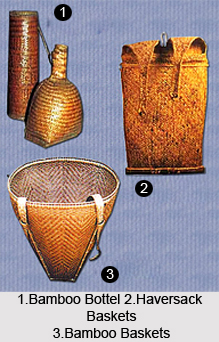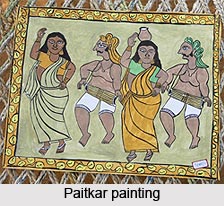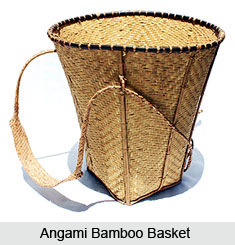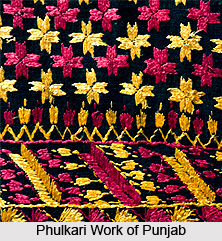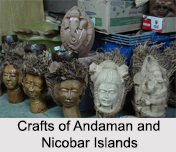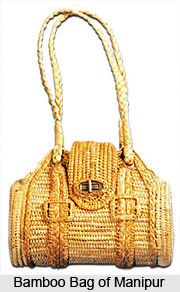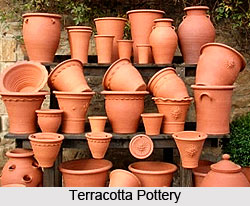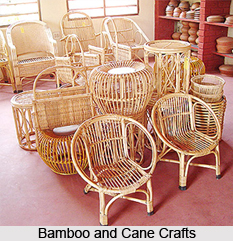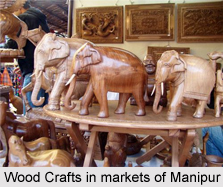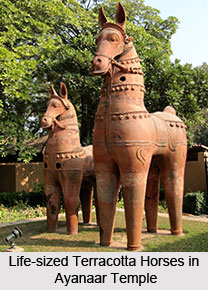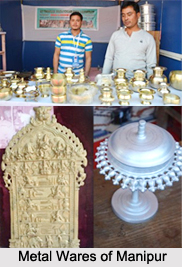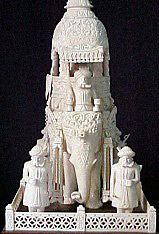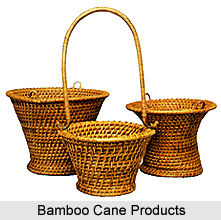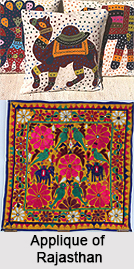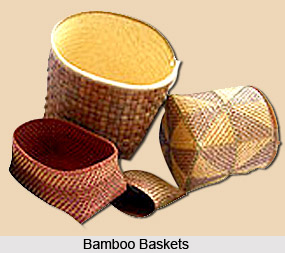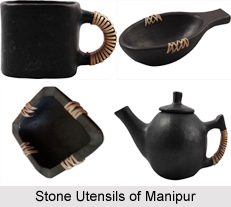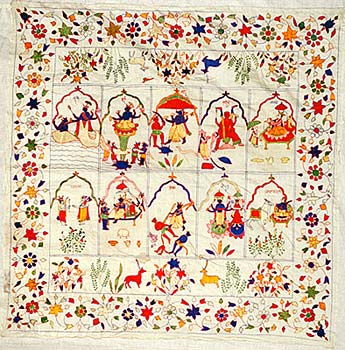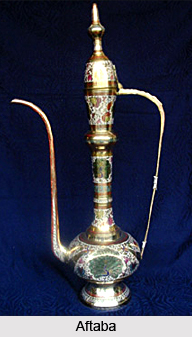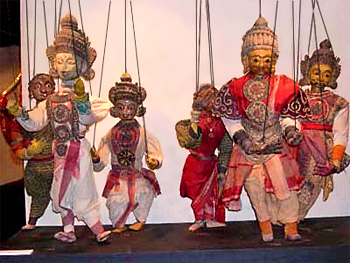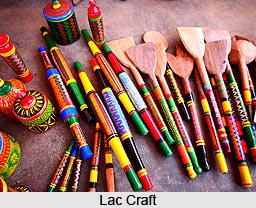 Wood work like other handicrafts has a very old tradition in Kutch. This craft includes wood carving and wooden block making.
Wood work like other handicrafts has a very old tradition in Kutch. This craft includes wood carving and wooden block making.
Lacquerware
Wool turning and lacquering on it is another traditional craft. Colours sticks are prepared by heating process by using button lac lithopone (Zinc powder) and sort of colour used for textile dyeing. Teak wood or desibaval is used for the article coloured lac stick is pressed against its surface while it is kept revolving on the lathe. Due to the heat of friction the colour melts and spreads. Then a piece of a wood is pressed on to the surface and oil applied via a cutton rag for even application. Later, designs of flowers and leaves are worked by using piece of a cloth of the coloured surface.
To produce a multi-coloured , effect lac sticks of yellow, red, white and black colours are applied one after the other and the layers of unwanted colour are removed. Lacquered bed posts, dandia (Stick) ghodiya (cradles) handles of spoon, velans (chapati rolles) bajots (low stool) patla, flower pots and powder boxes are produced at Niroria, Zura and Bhirendiara.
Wood Carving
Wood carving is also practiced in Kutch. Teak wood and local babul is used for middle relief carving at Ludia, Dumado, and Dhordo. The geometrical and floral motifs used in carving very minute designs show the high skill of the craftsmen. Bed posts, cradles, book ends, swings chapati rollers, valan, and pestles are the main objects carved.
Wooden Block
Wooden block required by the hand block printers are carved as blocks (from 1/2 "- 3") and the surface made smooth. Chalk and gum are applied to the surface which from a thin layer on the block. Then the design to be carved is transferred on the block by the pinprick method. Then following the outline of the design the portions which form the background are chiseled out. Then the raised surface is polished. This make the outline block. Then, filling blocks are carved. Thereafter, handles are fixed. Dhamanka and Dahisara are the main wooden block making areas.
Terracotta
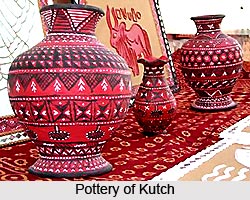 The terracotta craft of Kutch is as old as the history of mankind. This is one of the earliest mediums from which the artisans began to shape moulded items. The terracotta of Kutch bears a close resemblance to the old terracotta of Mohan-jo-Daro style. The potter who gives shape to the clay on his wheel is called a Frajapati. Decorating the homes with mud painting is also an ancient craft of the housewives of Kutch.
The terracotta craft of Kutch is as old as the history of mankind. This is one of the earliest mediums from which the artisans began to shape moulded items. The terracotta of Kutch bears a close resemblance to the old terracotta of Mohan-jo-Daro style. The potter who gives shape to the clay on his wheel is called a Frajapati. Decorating the homes with mud painting is also an ancient craft of the housewives of Kutch.
Terracotta Pots
The clay collected from the ponds is seasoned, beaten, powdered, filtered and immersed in water. When the clay attains plasticity, it is kneaded on a small workable potter`s wheel. Different sizes and shapes of pots are moulded. These pots are sun dried. On the dried pots painting is done by using earth colours of white red and black with the help of brushes made out of bamboo sticks or cotton.
The painting work is done by women. The common motifs used are waves, straight lines and zigzag lines, peacocks in various postures, leaves, fish and flowers. After painting the pots are baked in traditional kilns. Items include pots, kunja, Batak, Gharba, Deeva, plates; Jambudi, Lodai, Bhuj and Khavda are the main centres.
Terracotta Toys
The craftsmen shape the different toys in clay. Then details like ears, nose, mouth, eyes are worked and sun-dried. Afterwards they are painted with red and white earth colours and fired in kilns. Elephants, horses` bulls, buffaloes, kitchen ware and pots are items produced at Bhuj, Lodai and Jambudi.
